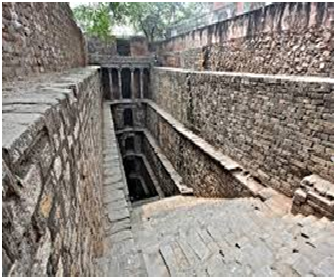Where Stones Speak!
Excavating the past
Rana Safvi is a wonder woman who claims that stones speak to her!
That is why she knows the secret of the many ruins of Delhi which she has collected within a colourful book titled, Where Stones Speak.
The author takes her readers on a delightful detour around the Mehrauli area, the ‘real’ old city that is older than today’s Old Delhi of Chandni Chowk and Jama Masjid. Mehrauli is the first of the seven cities of Delhi. Going far back in time, Rana writes that the Tomars had ruled Delhi from 736. It is Anangpal II who had encouraged people to populate the area after he built the Red Fort or Lal Kot in 1052 on the same site as Indraprastha, the pre -historic city mentioned in the Mahabharata.
According to legend after Raja Indra had filled both his hands with pearls and distributed the riches to his people his seat of power got its name from prastha meaning 48 double handfuls of Indra.
In 1450 before the birth of Christ, the Purana Qila was built on the same land as the vanished city of Indraprastha atop the rocky red mud hills of the Aravalli range. This was to safeguard the city from the river Yamuna that had invariably flooded during monsoons.
Quoting the oldest records, the author says that the Tomar kings ruled undisturbed for about a century till their defeat at the hands of Rajput Chauhans of Ajmer.
In 2014, the Archeological Survey of India (ASI) conducted excavations again to find conclusive proof. Till the last century, a village called Indraprastha had existed inside the Purana Qila. This was evacuated and relocated by the ASI. There is a lot of debate on how Indraprastha became Delhi.
Delhi probably gets its name from Raja Dhelu of Kannauj responsible for founding a new township near the deserted site of the legendary city of Indraprastha before it was chosen as the new capital of the rulers of Turkic origin in 1192.
Poet Amir Khusro even refers to Delhi as Dehli in a verse in the early 14th century:
Now give us a horse or from the stables grant us a beast of burden
Or give a farman to the skies that it may bear us to Dehlu.
The reader is led to the Yogmaya temple dedicated to the sister of Lord Krishna in Mehrauli. Said to be one of five temples remaining from the Mahabharat period, Seth Sidhu Mal of Chandni Chowk renovated the premises in 1827. Immediate to the north of the temple in praise of Goddess Yogmaya is the Shiva temple shelters an ancient shivling which priests saz is one of he oldest in Delhi and which is not made by man. The shivling emerged out of the ground miraculously and quite a bit of it is still rooted to the ground.
At the end of this interesting read, an itinerary is suggested for all those readers who want to follow in the footsteps of the author.
The closest metro station is Qutub Minar, writes Rana. From where a public transport is suggested to the Qutub Complex, the Mehrauli Archeological Park or Adham Khan’s Tomb. After that it is best to explore the area on foot.
For Mehrauli is a place alive with the history of many dead kings, nobles, ordinary men and lovers. It is a place that the author is in love with and like her if you befriend a local guide to take you around the area the stones are sure to speak to you as well.
(Where Stones Speak by Rana Savi is published by Harper Collins India, 2015)





